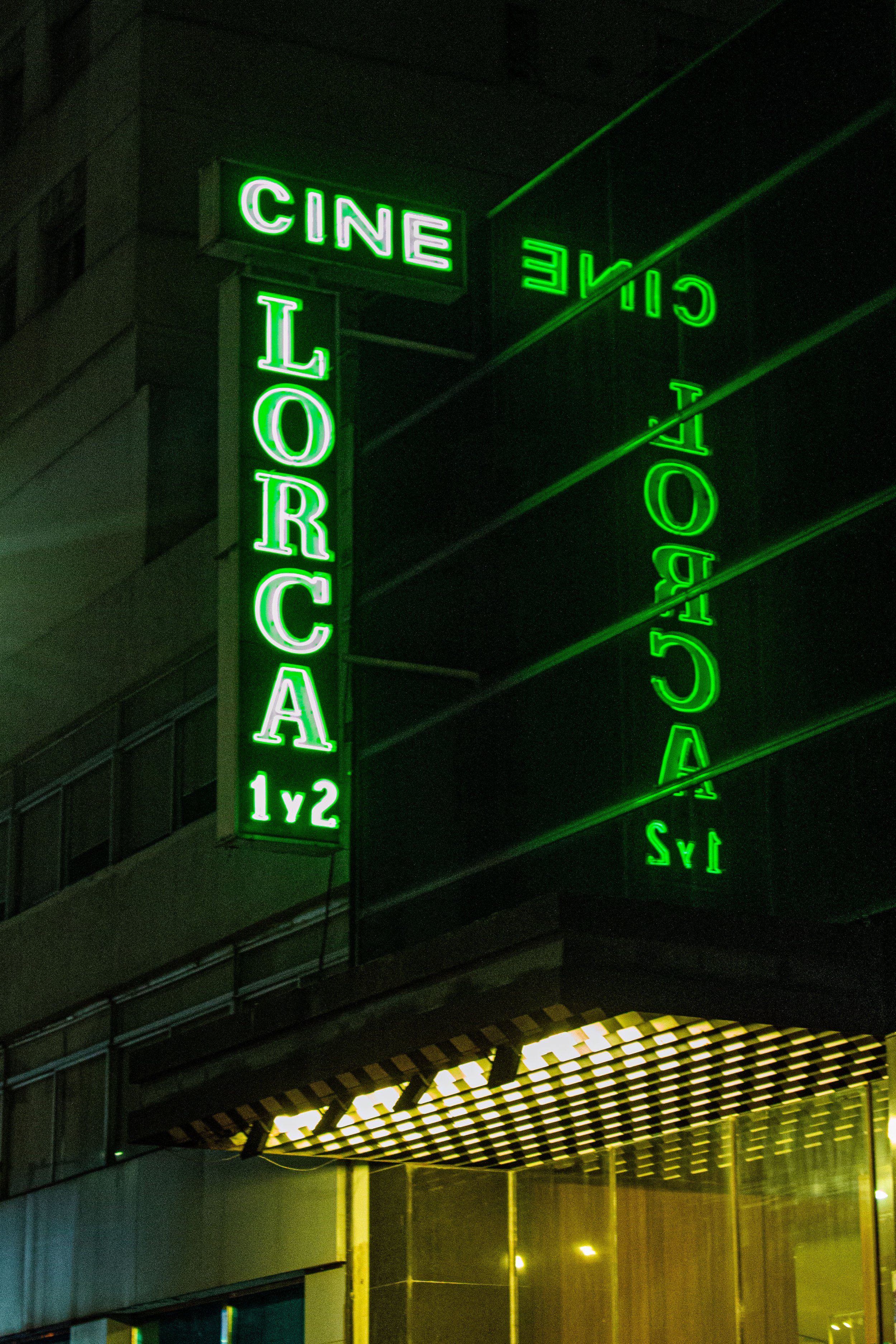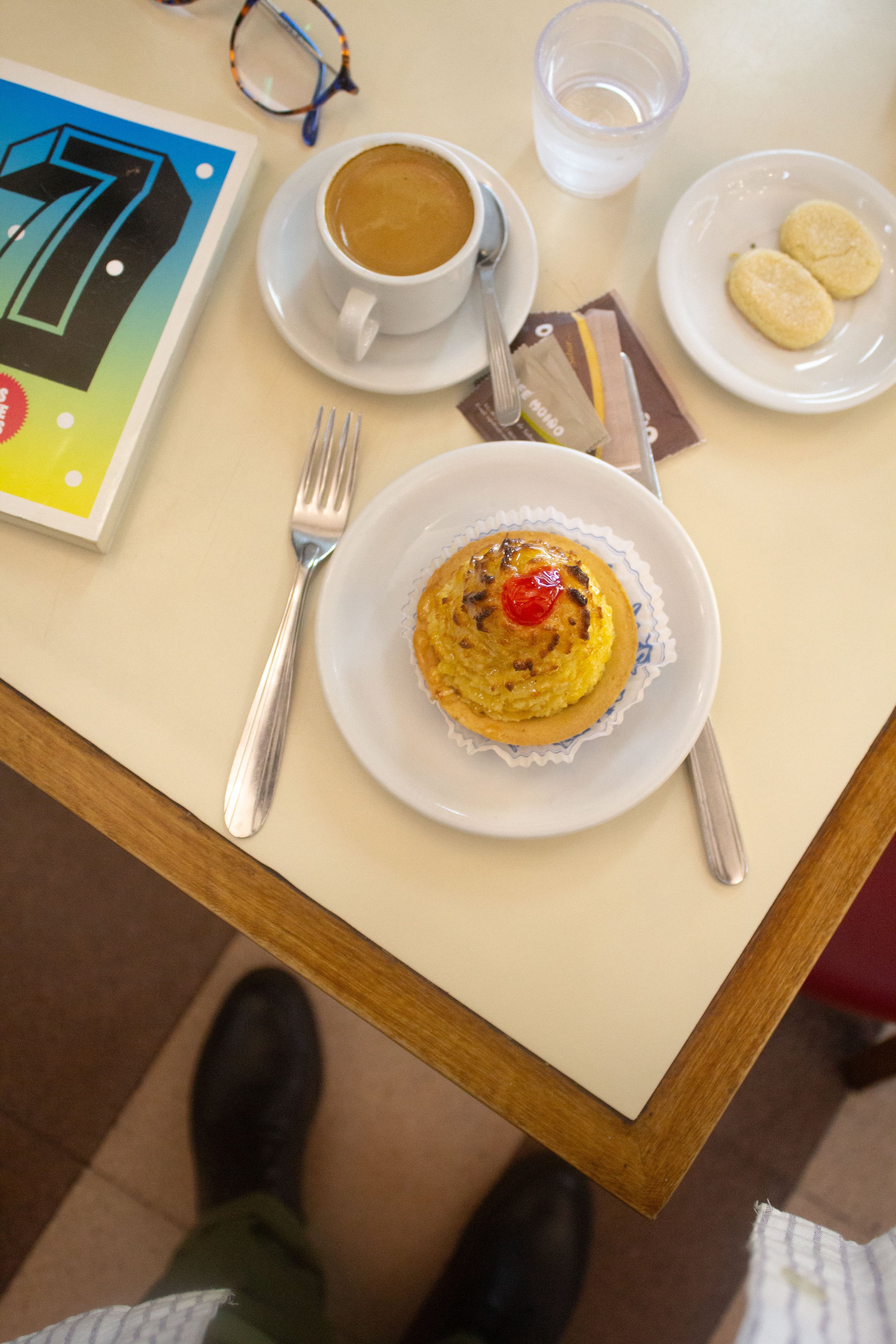
The city’s riptide
text and photos by Kevin VaughnThis story is part of a monthly collaboration with POSCO, a small Argentine company that produces vegetable-cured, hand-crafted leather shoes. Once a month, MATAMBRE x POSCO will bring a story inspired by walking in search of the simple pleasure of discovery.
hace click aquí para leer en castellano
When I round the corner of Avenida Callao onto Corrientes, I feel like I’m swept into a riptide. The traffic tightens, feet pick up speed, and it becomes difficult to plant my feet for more than a few heartbeats. Back in 2008, when I debated different study abroad programs, I landed in Buenos Aires because it had a beach — or so I imagined. Ironically, the two cities I turned down (Lima and Barcelona) do have beaches. Buenos Aires structurally turns it back on the river. Airport and asphalt were laid on the north coast, an old port took hostage of the south, and when that wasn’t enough, Puerto Madero built skyscrapers to steal the breeze. But then there’s Corrientes, triumphant, emerging from the old port, a porteño river surging up the middle of the city.
In a 1928 essay titled “The spirit of Corrientes street won’t change with an expansion” for “Aguafuertes porteñas ↵,” Roberto Arlt’s column for the daily El Mundo, he begins a recurring argument that Corrientes street is the real calle porteña, the only street in the city with a soul. Arlt strolls forty blocks, drifting with its currents. He begins in Almagro, where there’s an odd number of cheese shops and stores selling electric fans; he speeds through ‘crass’ working class Abasto, where women man shops that sell everything while their men look for a buck on the street; he glides through the Turkish and Jewish neighborhood of Once, ‘the apotheosis of Israel,’ a self-sufficient world of Jewish cafés, Jewish theaters, and Jewish restaurants; and he finally arrives to Avenida Callao, where the real Corrientes begins, ‘the street that loves itself, truly loves itself. The street that’s a pleasure to walk from end to end because it’s the street of wandering, of loafing, of escape, of joy, of pleasure.” It’s these roughly ten blocks that, Arlt argues, has a spirit that is immutable, no matter how much it changes on the surface.



NOT A SUBSCRIBER BUT ENJOY READING MATAMBRE?
Nothing is really free. Your support pays editors, writers, illustrators, copy-editors, and translators.
BECOME A SUBSCRIBER OR SUPPORT WITH A SMALL DONATION
I wonder what’s left of the spirit that Arlt knew, what didn’t change after the street widened into an avenue, when it was the center of cultural consumption. There’s an interview with legendary bartender Rodolfo San in Martín Auzmendi’s globe-hopping chronicle of bars, Cocktails on the Road. San began working in the Confitería Real on Corrientes and Talcahuano as a teenager in the 1930s. He describes a who’s-who of writers, playwrights, composers, film directors and tangueros who worked between coffee and cocktails, and meeting Evita, who consulted with him about building a union for bar workers to improve work conditions. Blue collar, white collar, bohemian, jet set, people of contrasting lives, everyone was there.
I don’t think it’s a coincidence that Corrientes runs up the middle of the city, sewing together the working-class Southside with the affluent north. It’s the only real democratic cultural space in Buenos Aires, where high brow and mainstream blend with one another. A few weeks ago, I caught a late show of Sanjuro on the 10th floor cinema of the San Martín and failed to discreetly open a bag of sour worms and contain my own nervous laughter. The next night, I watched Moria Casan perform in Brujas in a theater filled with equal sounds of laughter, applause, and crinkling plastic bags. Casan herself popped caramels between lines.
Like Arlt, San, and Evita, I like to walk the theater district of Corrientes because it makes me feel like I belong to this city, too. I have a mental map of bookstores, restaurants, cinemas, and theaters where I feel like I form part of the porteñidad. I’m quick to discount new places that are built for tourists. Spaces that imitate the street’s aesthetic but stand out as unremarkable. A fried chicken spot with a giant marquee, a low-lit knock-off of a North American chain called Tucson. I wonder how long Sbarro will last on the same avenue that houses the city’s most historic pizza shops. I struggle to understand its next door neighbor, Puny, with contrasting signs that read “trattoria” and “grill”. I cringe at the sudden appearance of signs that read “Theater District” in English and mourn the decline of Güerrín’s pizza despite expanding in every direction - onto the street, up another floor, an open patio in the middle of the block, a back room. I won’t be surprised if a basement dining room opens next to the subway tracks below.
I retreat into Libreria Lucas and dig through books closer to the cash register to eavesdrop on regulars shooting the shit with the shopkeepers, and I nod disapprovingly or in support of the debates that erupt, like whether a young writer can call themselves a writer without having read the Iliad. I like to ceremoniously inaugurate my new book at Pasta Frola with sanguches de miga or a coconut tartaleta. At the Lorca, I risk pulling my neck in the flattened theater to watch art films and at the Metropolitan Theater and CC de la Cooperación, I haven’t yet seen a play I don’t like. This year, half of what I saw were solo shows, because this is a city full of people that, above all things, have a necessity to express themselves.
I love how people take the time to participate in the ritual of spectacles, the atemporality of sitting in a dark theater to watch and contemplate as if it were the only thing that mattered in the world. I love how that sanctity spills onto the streets and into the bars and restaurants, where whatever you went to see is debated over dinner. And the best restaurants to do that are the ones where no one is obsessed with what’s new, often tucked away on the quiet streets that crash into the avenue. At Pippo, I always order vermicelli with tuco and pesto. It flies out of the kitchen in 45 seconds because they know everyone comes for the same thing. In Edelweiss, I ask the maître d' to sit me in Juan’s section, preferably a booth. The sherry and cream lemoncello that bookend the meal are often strong enough to remove nail polish. In between, despite it being a German restaurant (with a fantastic pork shank and homemade mustard), I usually flip to the Italian-ish section of the menu and order milanesa a la fugazetta, escalopes, or sorrentinos with scarparo.



In La Americana (the original one across from the Congreso) I pour over the list of breads, pastries, and milks. There’s warm milk, cold milk, and milk with cream. I’m intrigued about the latter but not enough to actually order it. I’m curious who does. When winter returns, maybe I’ll order a tortón (bread with chicharron) and tea with milk. I don’t often order pizza — I prefer empanadas. I like the criolla, a juicy beef empanada with a sturdy, charred dough, and the pastel de choclo, a puff pastry dough stuffed with a creamy corn filling. They say a good puff pastry is measured by the flakes that drop to the table and this one fills the plate with crisp crumbs.
On the 21st of September at 9:35 pm, I wrote in my journal:
The dining room is loud. The man next to me blows his nose. He goes through several napkins because they are as thin as tissue paper. Dishes vibrate. Glasses slam on tables, silverware clangs (when they’re dried and thrown on a pile of their brethren) and echo (when they make contact with a plate). People scream — the waiter screams back my order, the table in front of me divides the check ($3200 each without tip!), somewhere a woman screams with laughter. The dishwashers send a hollow sound of metal pizza trays emptying into the sink and a young waiter with a shiny head drags his feet heavily every time he passes behind me — swish, swish, swish — ¡Clear table 22! — swish, swish, swish. My wine glass is full to the brim and tastes like sour grapes. A table of eight children sit next to me. Their parents sit at another table, visibly excited to have their own table. The ring leader, a little girl with pink eye shadow, makes a declaration that dictates the table’s order. I want the promo with two empanadas and coke because, and she raises her hand dramatically, I don’t like pizza. Her mother, black hair with long white strands cut above the shoulder, manages the order at the adult table: Let’s not complicate things. It's easier to just order a few mozzarellas and beers.
It all reminds me of an interview with Charly Garcia about composing music: “Art is bigger than life. It’s a representation [of life], but one allows themself certain liberties.” Art permits you to twist the laws of nature, turning your ideas into something larger than what reality affords us. I agree but think this small stretch of city blocks is an exception. Block after block of stages and screens. Block after block of bookstores, cafés, pizzerías, and restaurants that are extensions of the stage. And we’re all each others’ extras, if you just pause to watch and contemplate as if it were the only thing that matters in the world. I don't know what the future holds for calle Corrientes, but I’m sure this will never change.
Further Learning
Luisita’s Photo Studio by Sol Miraglia and Hugo Manso, on Mubi
Buenos Aires’ Singular Cocktail Culture Has Its Very Own Golden Age to Thank by Kevin Vaughn, vía Punch
Aguafuertes porteñas by Roberto Arlt, vía Bookshop